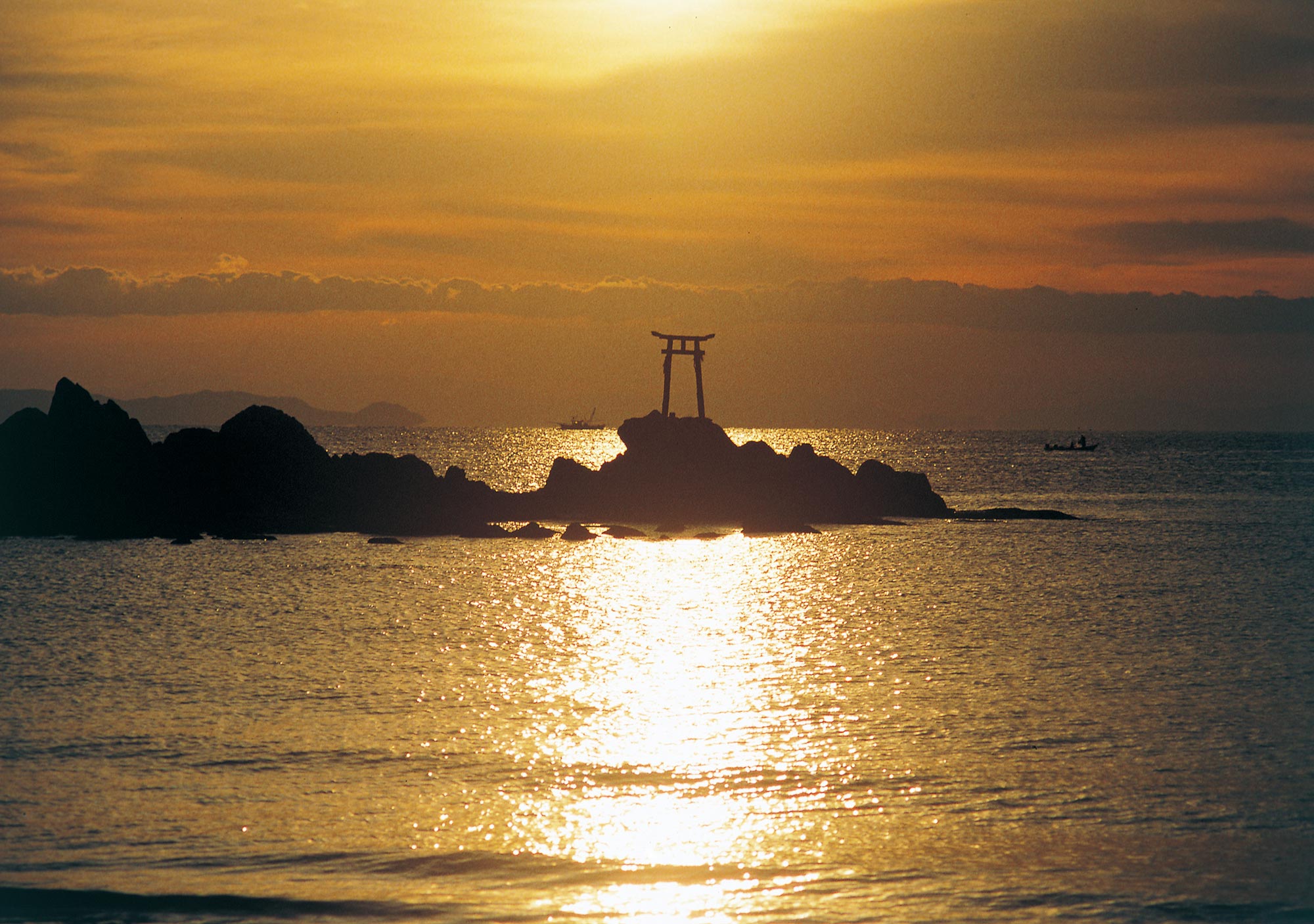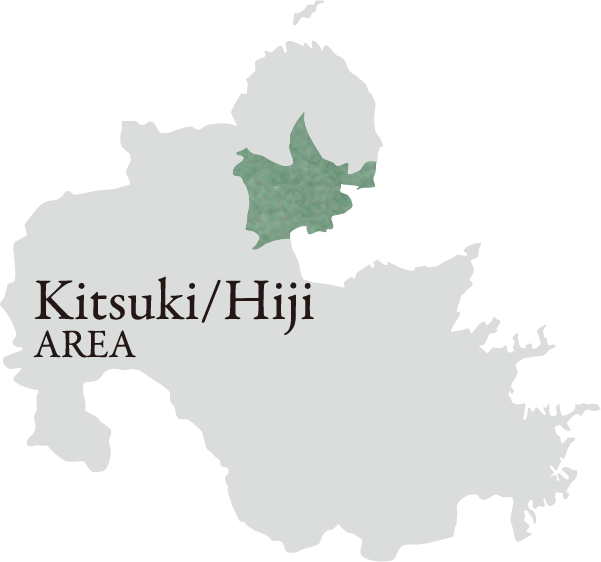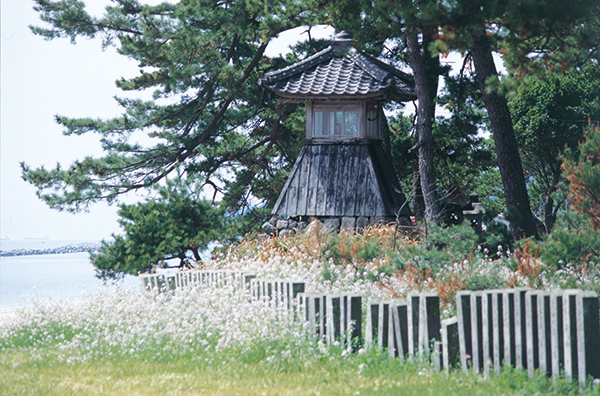

- Kitsuki & Hiji
- Landscape
Pine Trees of Nada Coast
Photography/ISHIMATSU Takeo
a High-Ranking Hachimangu Shrine
The rising sun glitters over Beppu Bay, sunlit waves crash on the shoals, and wind blows through the pine forest. This is Nada Coast in Kitsuki, chosen as one of the “Top 100 White Sand, Green Pine Beaches of Japan.” “Nada” likely comes from a word meaning “open sea.”
The volcano that formed the Kunisaki Peninsula tilted greatly after its formation, causing the southern part of the peninsula to rise. That is where the shoal coast was formed. The beaches and pine forest stretching more than two kilometers from Nada to Karishuku form a beautiful coastline representative of Oita Prefecture and serves as a swimming and campsite area chosen as one of the “Top 88 Swimming Areas in Japan.”
Here, Hachiman Nada Shrine stands facing the sea. The shrine gate faces the sea, and the promenade is the sea itself. Also, the large lantern with wooden shingles next to the gate served as a lighthouse for seafaring people.
While Nada Shrine is a subordinate of Usa Hachiman Shrine, its rank is high. Legend has it that the Three Goddesses, known as the goddess Himegami celebrated at the center of Hachiman Shrine, came ashore and manifested here.
The name of the goddess is derived from the sea, and there is a rocky island floating 300 meters from the coast called Ichiki Island, for which one of the goddesses is named. Does this name, which also is the root of Itsuku Island, come from worship of the gods?
Nada Shrine has deep ties to the imperial visits of Usa Shrine. When renewing an object of divine worship called the mishirushi (“sacred seal”) of Usa Shrine, the old one was carried to Nada Shrine. This is one of the reasons the seated wooden statues of Sougyou Hachiman and the goddesses, a Nationally Designated Important Cultural Property, are at Nada Shrine.
High priest Nada of Nada Shrine was deeply involved with the Otomo family during the Middle Ages. The names of the famous father and son Akimoto and Shigemoto Nada share similar characters to the father and son of the Otomo Clan, Yoshiaki and Yoshishige (Sourin). What’s more, Akimoto’s daughter legally wed Sourin and bore a son named Yoshimune.
The name of the wife is unknown. But it is known that her nickname was Jezebel. A strong believer in Buddhist-Shinto syncretism at the forefront of the anti-Christian movement, she was involved in all kinds of incidents. The Jesuits, who were at a loss, called her the name of the wife of Ahab, King of Israel, who persecuted Christians.

The enormous lantern of Nada Shrine.

